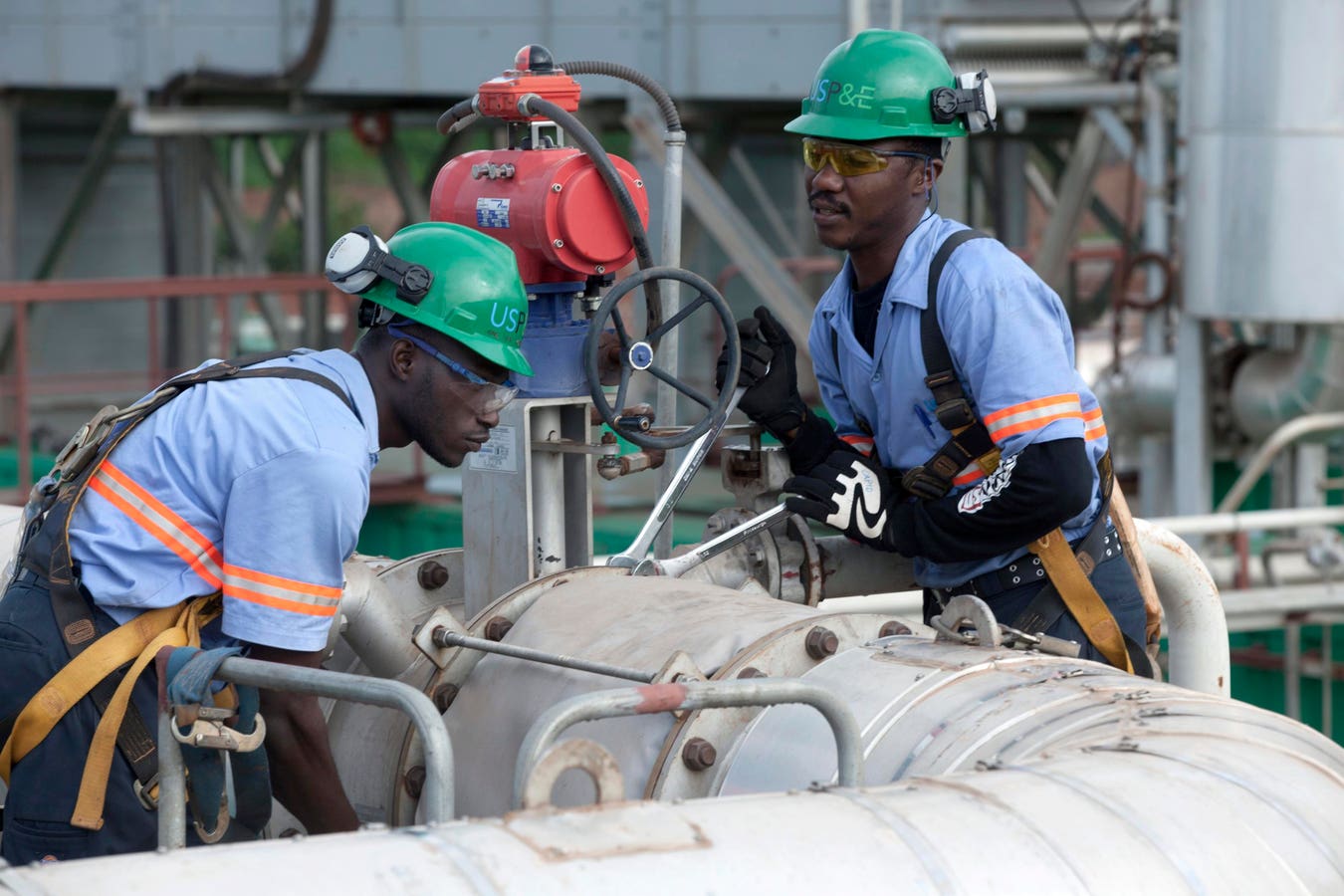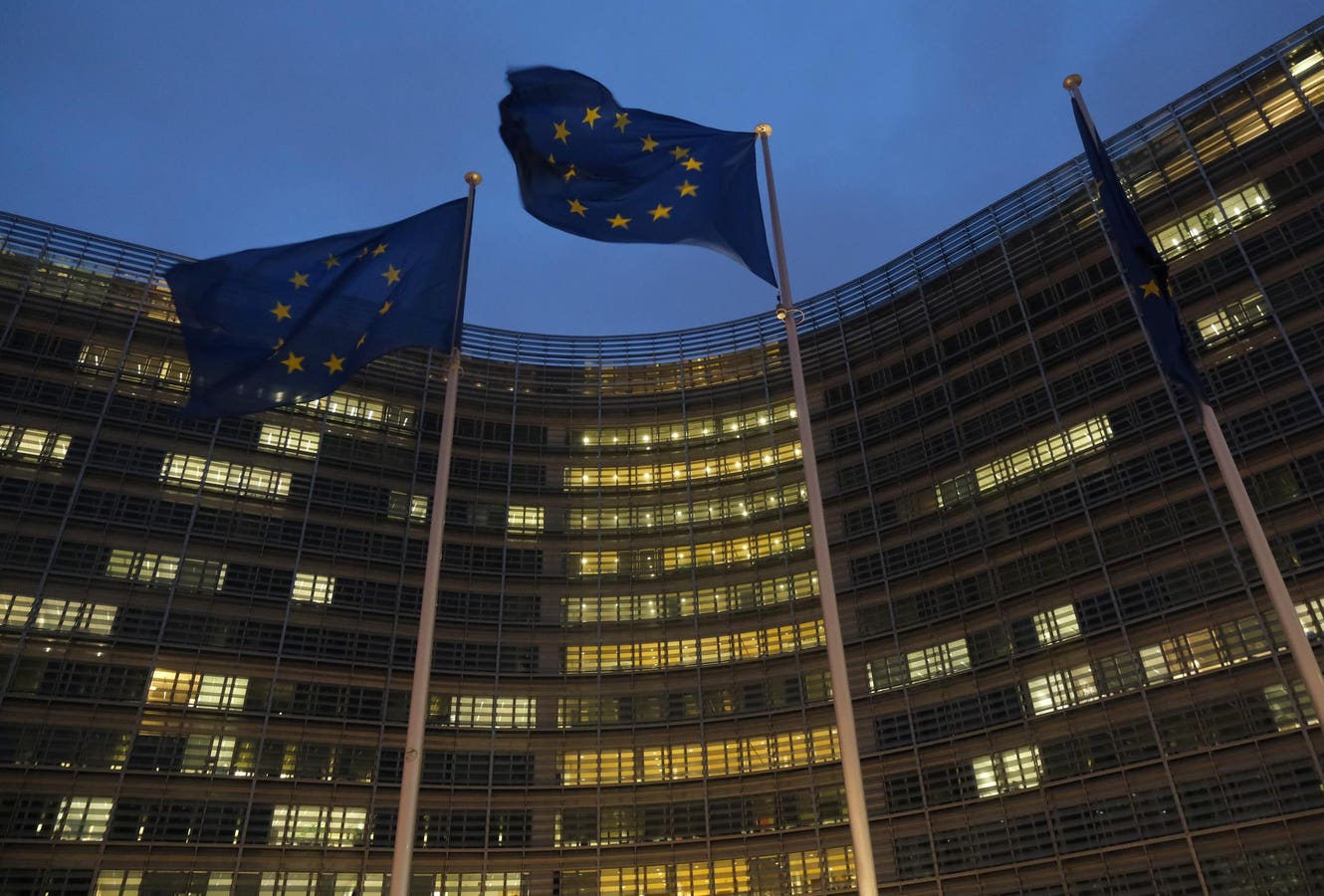Workers for USP&E Global service a power station for an iron ore-mine owned by London mining in … More
In a remote village in Sierra Leone, the sun dips below the horizon—but this time, the lights stay on. A solar-powered mini grid, supported by the African Development Bank, the International Renewable Energy Agency (IRENA), and local stakeholders, delivers clean electricity to homes and businesses around the clock.
Once dependent on kerosene lamps and diesel generators, many villages now run on clean energy. Electricity powers schools and clinics, and small businesses have expanded—improving safety, education, and economic prospects in the process.
Yet 2,000 miles away, in the Democratic Republic of the Congo and nearby countries in Central Africa, the situation is quite different. These areas also receive plenty of sunshine, but much of it goes untapped. Why? Because investors are cautious. The electric grids are fragile or non-existent. Governments often lack the creditworthiness to support large-scale green energy projects, and the cost of financing is prohibitive. Without basic energy infrastructure, these countries are unable to develop or provide universal electricity.
The contrast between Sierra Leone and the DRC isn’t a question of technology or political will. It’s a crisis of infrastructure—and of a global financial system that has failed to prioritize it. Bridging the energy access gap will require hundreds of billions of dollars in additional investment by 2030, primarily in transmission and distribution systems across low-income countries.
According to the International Energy Agency, global spending on clean-energy networks must increase from approximately $270 billion in 2023 to $870 billion per year by the early 2030s to meet climate and energy goals. Consider this: 570 million people in Africa and 750 million people worldwide still lack access to electricity.
Francesco La Camera, Director-General of IRENA, argues that incremental project finance won’t narrow this gulf. Instead, he calls for a paradigm shift: long-term infrastructure deals backed by multilateral institutions, aimed at building resilient energy systems from the ground up.
“This is not charity,” La Camera told me. “It’s development. We must rethink how cooperation between the North and South works—and connect that development to infrastructure that supports new energy.”
The Climate Clock Is Ticking
TOPSHOT – Artisanal miners collect gravel from the Lukushi river searching for cassiterite on … More
Scientists warn that the window for action is closing. NASA confirmed in 2024 that the world has already crossed the 1.5 degrees Celsius threshold—the level at which irreversible climate damage becomes increasingly likely. According to IRENA, the world must triple renewable energy capacity by 2030. To stay on course, global CO2 levels must fall 43% by 2030 and 60% by 2035.
But this transition can’t happen without climate finance. In Africa, multilateral financial institutions have coordinated project pipelines totaling $2 billion in just one year, helping countries like Sierra Leone build capacity and attract long-term investment. Still, Africa receives only about 2% of global renewable energy investment—a glaring disparity between the need and the support.
In truth, energy infrastructure is the 21st century’s Marshall Plan—a systems-level investment that could transform economies, reduce emissions, and bring electricity to hundreds of millions.
Africa has enormous potential for clean energy. On average, renewables—mostly hydropower—account for about 22% of the continent’s electricity generation. Nigeria, for example, aims to achieve 50% renewable electricity through localized microgrids, with support from the World Bank and the African Development Bank.
Meanwhile, the global energy shift has reached a critical juncture. In 2023, 92% of new electricity capacity added worldwide came from renewable sources—a trend that appears likely to continue. This occurs despite geopolitical instability, the Trump administration’s support of fossil fuels, and its withdrawal from the Paris Agreement.
“We’ve passed the tipping point,” La Camera says. “The market has made its choice. But unless multilateral lenders rewrite the rules of development, much of the Global South will be left in the dark.”
It’s not enough to install solar panels or wind farms. Electricity needs a flexible and interconnected grid to manage variable supply and growing demand. Many low-income countries lack that backbone.
Time to Rethink Development Finance
BAKU, AZERBAIJAN – OCTOBER 11: Francesco La Camera, Director-General of the International Renewable … More
This “infrastructure gap” also inflates borrowing costs, creating a vicious cycle: the perceived risk keeps investors away, which further erodes infrastructure and deters more capital. Poor countries spend most of their money repaying debt—not building distribution networks.
In many African nations, the cost of capital for infrastructure projects can range from 12% to 20%, compared to 4% to 6% in developed markets, according to estimates from the African Development Bank and the International Energy Agency. That difference alone can double project costs.
“Without reliable infrastructure, investors won’t risk their capital,” La Camera says. “You can’t put electrons into a grid that doesn’t exist. And if people can’t afford to pay for electricity, the projects aren’t bankable.”
The director-general doesn’t mince words: the current project-by-project aid model isn’t effective. What’s needed now is a structural response.
Multilateral financial institutions—like the World Bank, African Development Bank, and Asian Development Bank—must shift their focus to long-term infrastructure investment, concessional loans, and risk guarantees. These tools can unlock funding and make otherwise unbankable renewable projects feasible.
In 2022, multilateral development banks provided approximately $65 billion in climate finance, with a significant portion directed at energy infrastructure and policy support in low- and middle-income countries, according to the MDB Joint Report on Climate Finance. But that still falls far short. The African Development Bank estimates the continent needs $130 billion per year in energy investment to meet demand and achieve much broader electricity access by 2030.
This isn’t just good policy—it’s good economics. Infrastructure investment drives growth, creates jobs, and lays the foundation for long-term development.
Take Uzbekistan: IRENA, working with the European Investment Bank, helped facilitate funding for 900 megawatts of utility-scale solar energy, including a 400 MW project that will power approximately one million households and reduce the country’s reliance on natural gas.
“These are not isolated cases,” La Camera said. “They show how infrastructure-led development and multilateral support can unlock the transition.”
Why Not Leave To The Private Sector?
Some critics argue that development should be left to private markets, warning that favorable financing can distort competition or create dependency. Others question whether fledgling governments can effectively manage infrastructure investments.
While those concerns are real, they miss the point. Without infrastructure, markets can’t function. Investors won’t commit to regions where offtake is uncertain and power grids are unreliable. Multilateral banks don’t replace the private sector—they enable it.
La Camera is cautiously optimistic that we can solve the crisis dilemma while bringing clean energy to millions globally. “It’s becoming harder to meet the Paris goals—but we must not stop. The transition is unstoppable—always up, up, and up.”
Still, hope alone won’t power homes or stabilize grids. Indeed, the international community must commit to serious financing and infrastructure development that makes it possible. Half-hearted efforts prolong the imbalance.
Building and financing resilient, interconnected energy systems is the defining challenge of our time—and the key to bridging the global energy divide. It means rethinking development, rewriting the rules, and ensuring that everyone, everywhere, has access to clean electricity—not just to raise living standards, but to confront climate change on a large scale.









